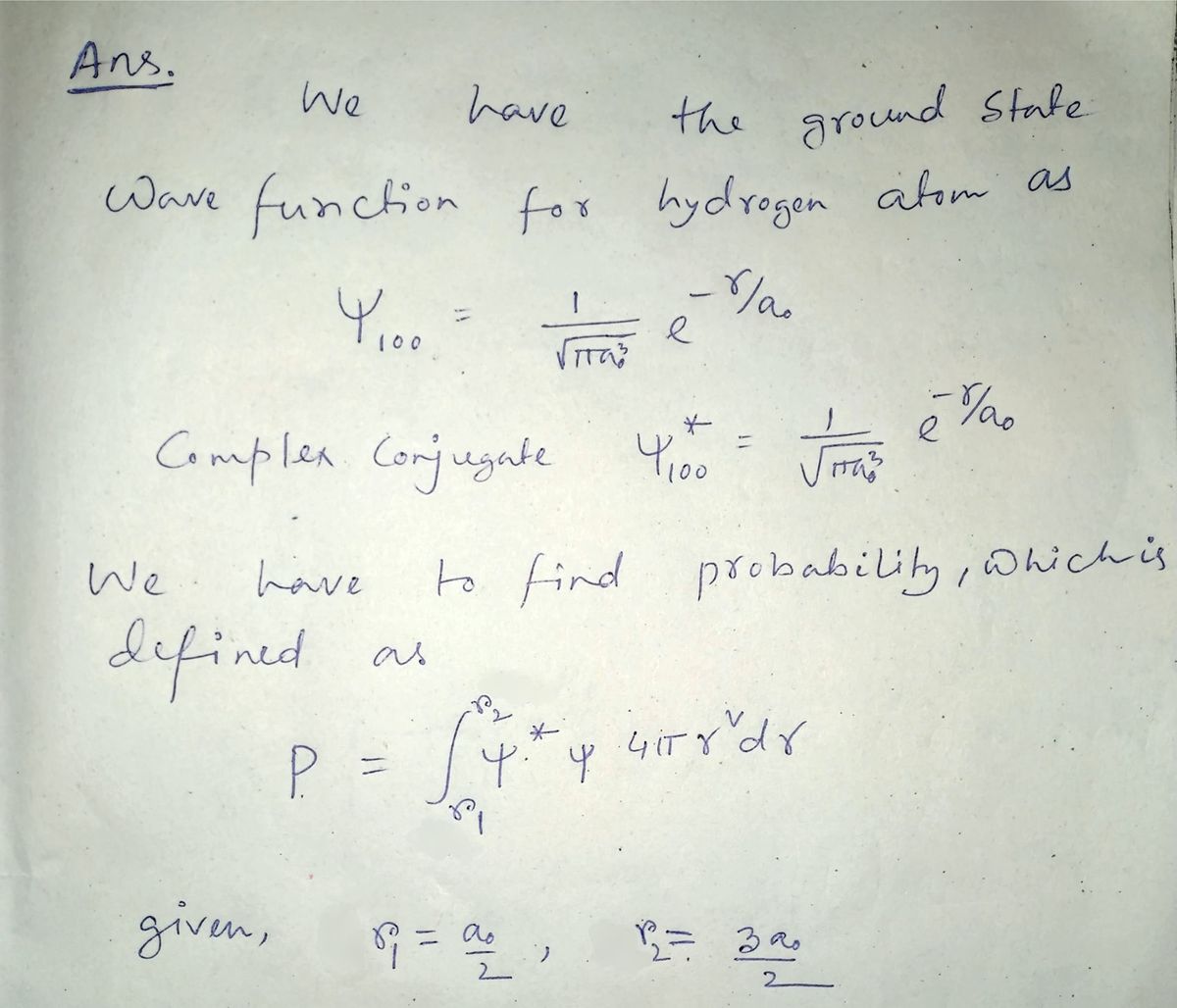1. Find the probability of locating the electron between (2)ao and (3/2)ao when in the ground state of the hydrogen atom.
1. Find the probability of locating the electron between (2)ao and (3/2)ao when in the ground state of the hydrogen atom.
Related questions
Question

Transcribed Image Text:**Problem Statement:**
1. Find the probability of locating the electron between \((\frac{1}{2})a_0\) and \((\frac{3}{2})a_0\) when in the ground state of the hydrogen atom.
**Discussion:**
This problem involves calculating the probability of an electron's position in a hydrogen atom while it is in its ground state. The ground state refers to the lowest energy state of the atom. The probability calculation will likely involve integrating the radial probability density over the specified range within the Bohr radius \(a_0\).
**Details:**
- The hydrogen atom is one of the simplest atomic systems and is often used as a model in quantum mechanics because of its analytical solvability.
- \(a_0\) represents the Bohr radius, a constant denoting the most probable distance between the proton and electron in a hydrogen atom in its ground state.
- The specific notation \((\frac{1}{2})a_0\) and \((\frac{3}{2})a_0\) indicates the range of distances from the nucleus where we need to find the probability of the electron's presence.
Expert Solution
Step 1

Step by step
Solved in 3 steps with 3 images
